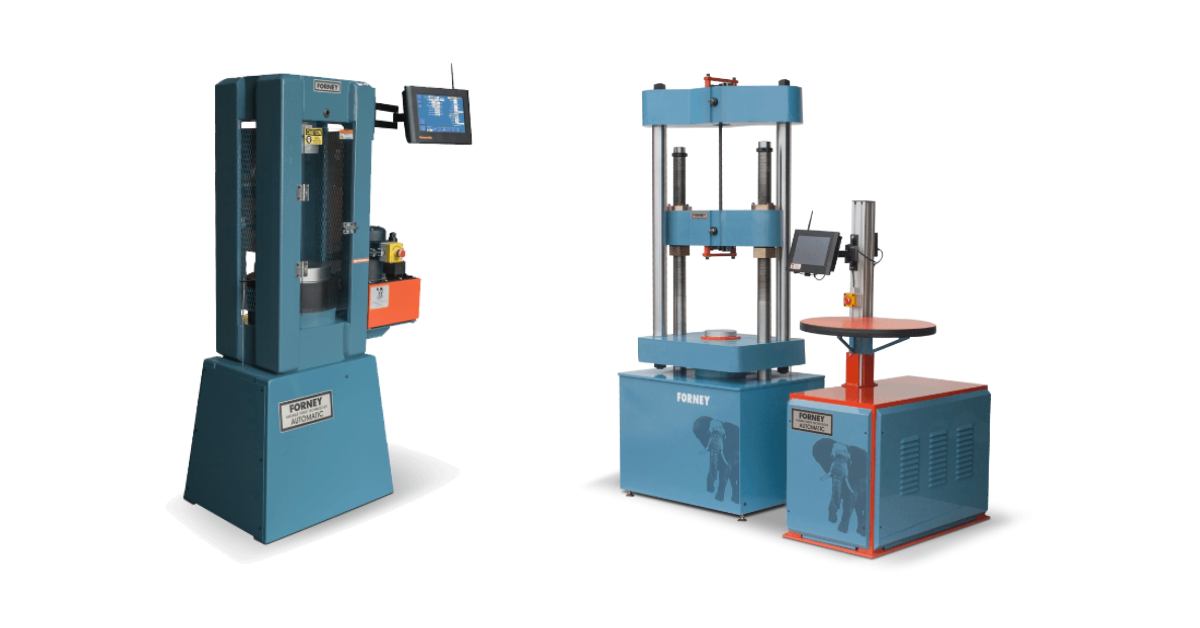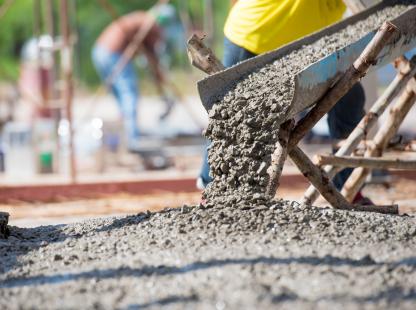Concrete Testing Near Me for Project Confidence: Quality Control in Action
Wiki Article
Putting Concrete to the Examination: Unveiling the Tricks of Material Strength
Despite its widespread use, the keys of concrete's remarkable toughness stay mainly hidden. In this discussion, we will certainly delve right into the composition of concrete, the aspects that affect its stamina, and the cutting-edge methods employed to measure and boost its efficiency.The Structure of Concrete
Concrete is a composite material consisting of a mix of concrete, water, aggregates, and frequently other additives. This combination offers concrete with its distinct residential properties, consisting of durability, strength, and versatility.The size and form of the aggregates can affect the workability and strength of the concrete. These ingredients can enhance the workability, minimize the water material, boost the toughness, or improve the resilience of the concrete.
Recognizing the composition of concrete is essential for designers and building professionals to make and build structures that fulfill certain efficiency demands. By thoroughly selecting the kind and proportion of each active ingredient, the desired stamina and resilience of the concrete can be achieved. In addition, developments in material scientific research remain to discover brand-new ingredients and blends that can better boost the homes of concrete, making it a much more trustworthy and functional building and construction product.
Variables Impacting Concrete Toughness

Different kinds of concrete have differing chemical compositions, which can affect the strength of the resulting concrete. Additionally, the dimension and form of aggregates used in the mix can impact concrete strength.

Other factors that impact concrete toughness include the use of admixtures, such as accelerators or plasticizers, the addition of supplemental cementitious materials, and the presence of pollutants or pollutants in the raw materials.
Examining Methods for Concrete Strength
One commonly made use of method for evaluating the strength of concrete is with the application of different screening methods. One of the most commonly made use of strategies is the compressive strength test, which measures the optimum tons a concrete example can endure prior to it fails.Another vital testing approach is the flexural strength examination, which evaluates the capacity of concrete to resist flexing forces. This examination involves subjecting a beam-shaped concrete specimen to a progressively enhancing load until it reaches its optimum bending capability. By measuring the tons and deflection at failing, designers can identify the flexural stamina of the concrete.
In addition to these tests, there are other methods readily available for assessing concrete strength, such as the split tensile stamina examination, the pull-off examination, and the ultrasonic pulse rate examination. The split tensile stamina test measures the capability of concrete to resist tensile pressures, while the pull-off test assesses the bond strength between the concrete and various other products. The ultrasonic pulse speed test utilizes acoustic waves to figure out the high quality and harmony of concrete.
Enhancing Concrete Toughness
One approach is to make use of top notch products throughout the concrete manufacturing procedure. In addition, including auxiliary cementitious materials such as fly ash or slag can boost the concrete's resistance to chemical attack and minimize leaks in the structure.
Additionally, reliable healing methods play a critical duty in boosting concrete resilience. Curing entails keeping adequate wetness and temperature level problems for the concrete to properly obtain and moisten strength. This process aids protect against splitting, surface flaws, and enhances total resilience.
Future Technologies in Concrete Modern Technology
In the world of concrete modern technology, advancements imminent guarantee to transform the market and redefine the opportunities of construction. Designers and researchers are frequently making every effort to develop ingenious techniques and products that can enhance the efficiency and sustainability of concrete.Among the future technologies in concrete modern technology is making use of self-healing concrete. This cutting-edge technology allows concrete to fix itself when cracks take place. Microorganisms embedded in the concrete are triggered upon fracture formation, generating sedimentary rock to fill the voids and bring back the structural honesty of the product. This not only raises the life-span of concrete frameworks yet additionally decreases the requirement for costly repair work and upkeep.
These products have high toughness and conductivity, improving the sturdiness and performance of the concrete. Furthermore, nanotechnology can be used to establish self-cleaning concrete, which minimizes the demand for regular upkeep and cleansing.
Moreover, scientists are exploring making use of 3D printing technology in concrete building and construction. This strategy permits for the reliable and precise fabrication of complicated frameworks, minimizing product waste and building and construction time. It also opens up brand-new opportunities for building layout and modification.
These future technologies in concrete innovation have the prospective to reinvent the building and construction market, making it more sustainable, reliable, and affordable. With recurring r & d, we can anticipate to see these improvements end up being a truth in the future.
Verdict
Finally, recognizing the make-up of concrete and the factors that influence its stamina is important for enhancing its resilience. Numerous screening methods can be used to accurately determine concrete toughness, providing valuable insights for building and Visit Website construction jobs. As technology continues to breakthrough, future innovations in concrete modern technology hold the prospective to further boost the toughness and durability of this essential building and construction material.In enhancement to these tests, there are other techniques readily available for examining concrete toughness, such as the split tensile toughness examination, the pull-off examination, and the ultrasonic pulse velocity test. The split tensile toughness test gauges the capacity of concrete to resist tensile pressures, while the pull-off test assesses the bond stamina in between the concrete and other materials.One of the future developments in concrete modern technology is the usage of self-healing concrete. These materials have high toughness and conductivity, boosting the toughness and performance of the concrete. As innovation proceeds to breakthrough, future developments in concrete modern technology hold the potential to additionally boost the toughness and toughness of this important construction material.
Report this wiki page